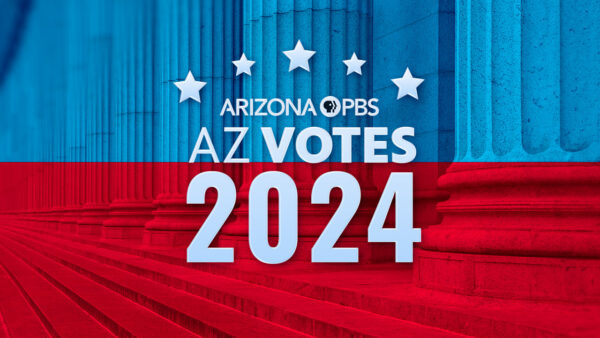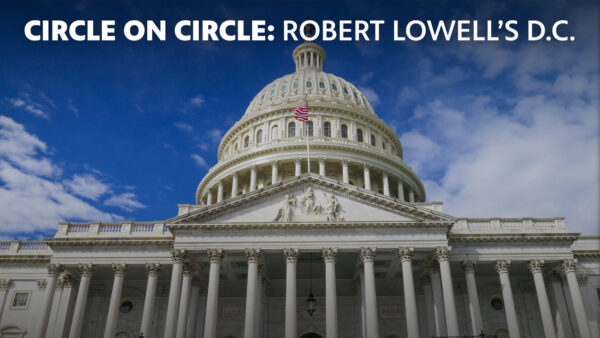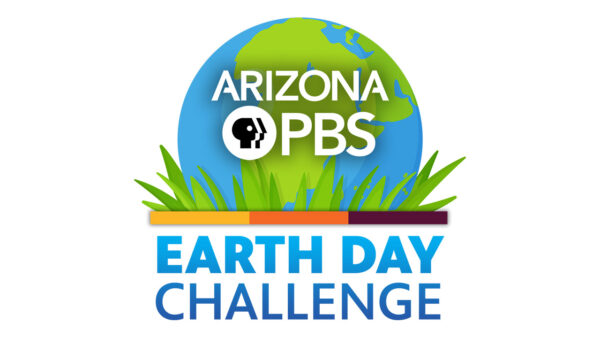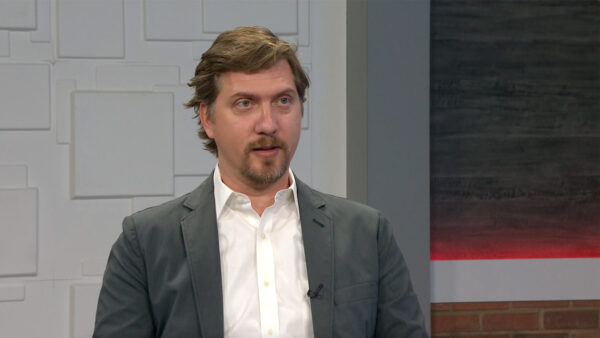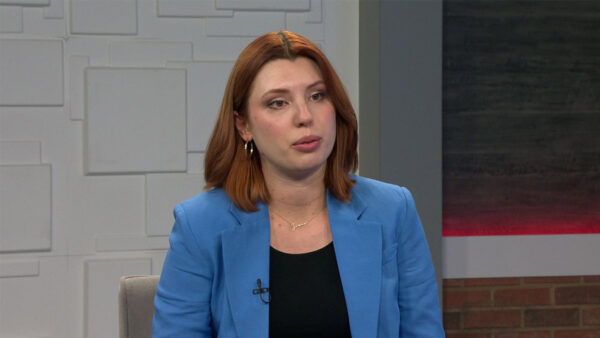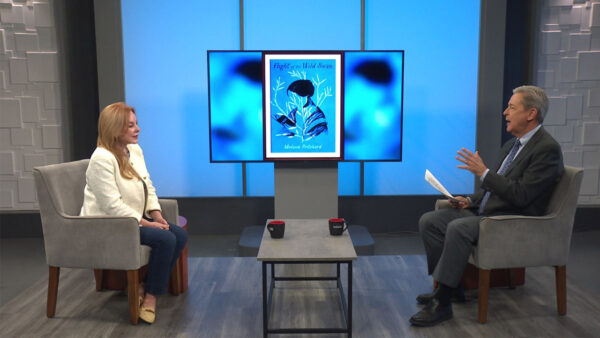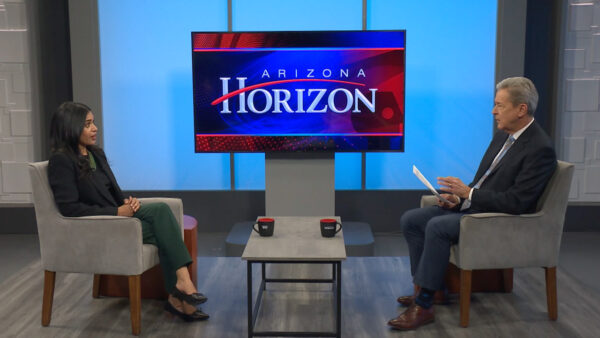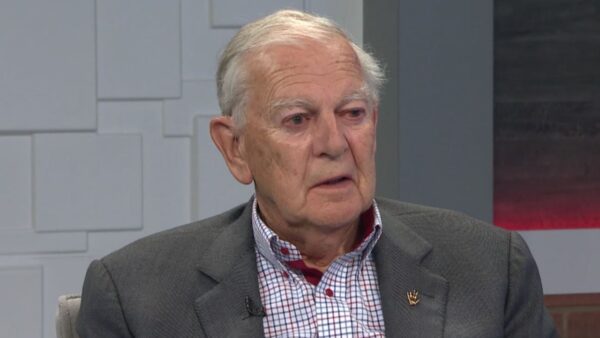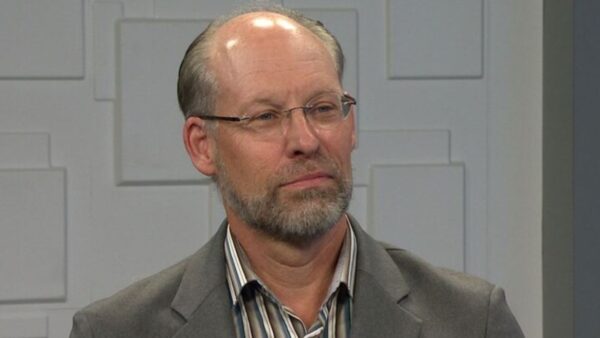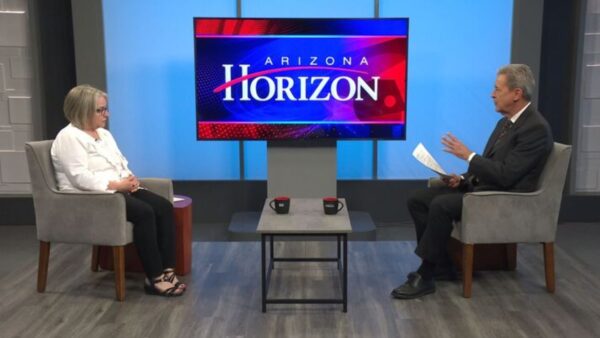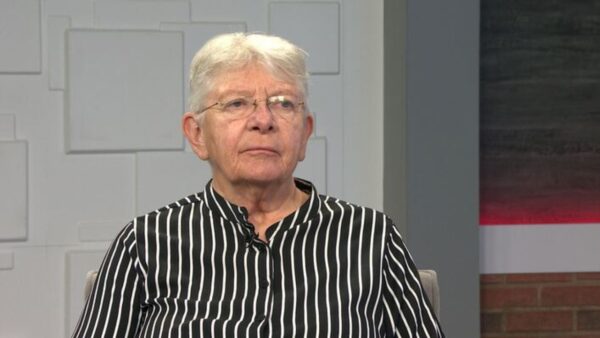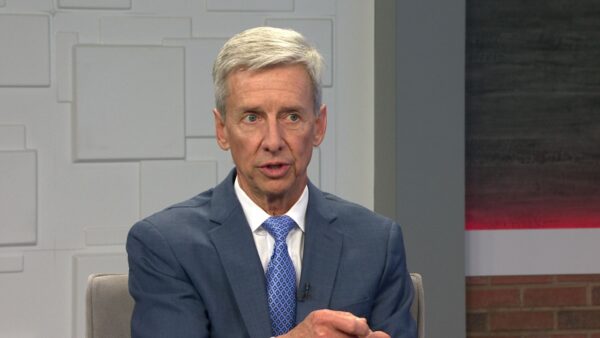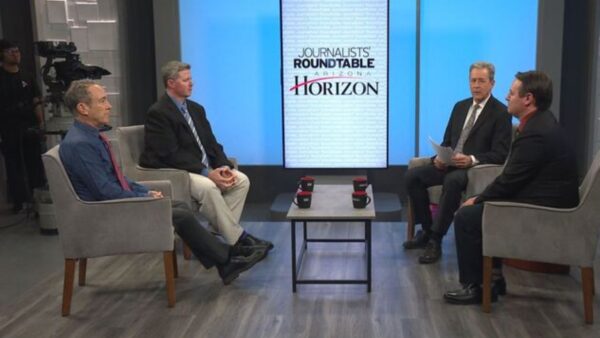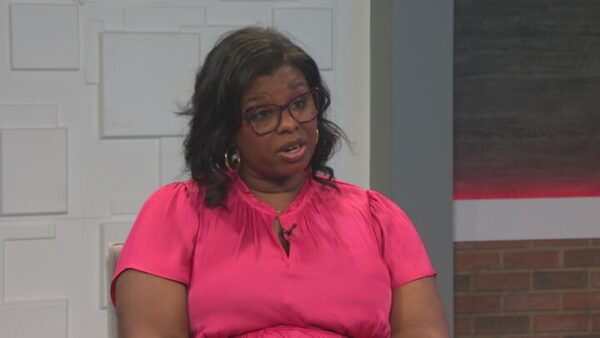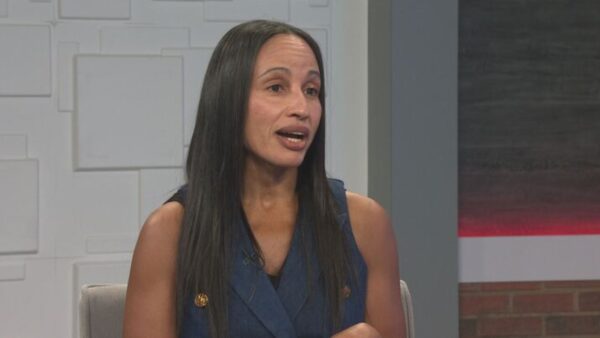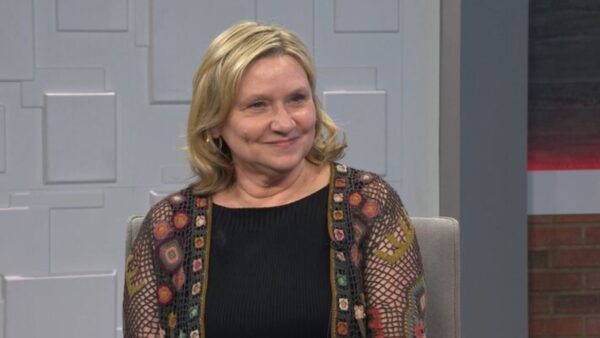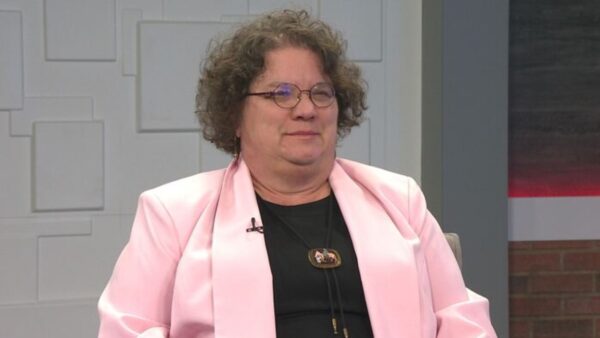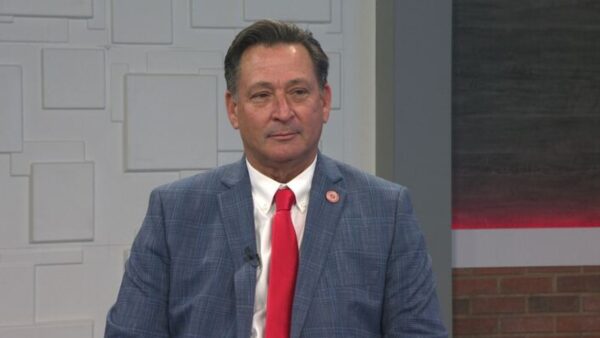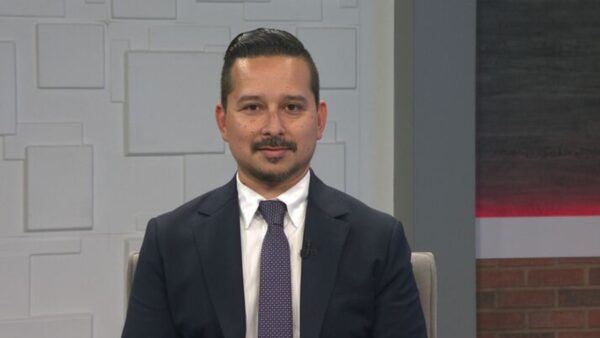We continue our Black History month series with Calvin Goode. Goode grew up in a Phoenix, where African-Americans were not allowed to eat in many restaurants, and were restricted in housing. But Goode went on to earn business and education degrees from Arizona State University. For 22 years, he served on the Phoenix City Council. Learn more about Goode’s life and the obstacles he faced growing up as an African-American in the Valley.
Jose Cardenas:
We continue our Black History Month series with Calvin Goode. Goode grew up in Phoenix, where African-Americans were not allowed to eat in many restaurants and were restricted in housing. But Goode went on to earn business and education degrees from Arizona State University. For 22 years he served on the Phoenix City Council. Learn more about Goode's life and the obstacles he faced growing up as an African-American in the valley.
Announcer:
Arizona's centennial is five years away. State officials are gearing up to commemorate Arizona's 100th birthday. Learn more about their plans. Centennial Cary Pfeffer or Cary Pfeffer, Jose Cardenas.
Jose Cardenas:
Tonight on "Horizon," five years and counting to Arizona's 100th birthday. We'll tell you about the Arizona centennial planning.
Jose Cardenas:
He attended segregated schools in Phoenix but went on to serve on the Phoenix City Council. Tonight a visit with Calvin Goode. Those stories coming up on "Horizon."
Announcer:
"Horizon" is made possible by contributions from the friends of eight, members of your Arizona PBS station. Thank you.
Jose Cardenas:
Good evening. I'm Jose Cardenas. Welcome to "Horizon." Today is Arizona's 95th birthday. It was celebrated with a series of events at the state capitol today. In five years Arizona will turn 100. And plans are underway to celebrate that event. I'll talk to two members of the group doing the planning. But first here's more about today's celebration.
Betsey Bayless:
95-years ago today, there was great excitement in Arizona. My family and many of your families were so thrilled that Arizona territory entered the United States of America. And thus was born the baby state. Well, how that baby has grown. And we are here today to celebrate 95-years. I'd now like to introduce Governor Napolitano who has a proclamation for Statehood Day.
Governor Napolitano:
Thank you, Betsy. Good morning, everybody. Good afternoon, I guess now. Happy 95th birthday to Arizona. A great year and with a wonderful honoree for the poly award. Congratulations. I still think of you as Senator Bennett. So Senator Bennett. As the governor I would like to present a formal proclamation in honor of Statehood Day. And so if I might, let me go ahead with the whereases. Whereas on February 14 1912 President William Howard Taft signed the bill that accepted the Arizona constitution making Arizona the 48th state. Whereas after the announcement that President Taft had signed the Arizona statehood act, was telegraphed to the people of Arizona governor George W.P. Hunt was inaugurated and the Legislature was called into its first session. Whereas for 95 years people have come to make Arizona their home, drawn by the beauty of our state, our rich history and proud heritage, the unlimited opportunities and horizons, the unique lifestyle and the chance to be part of a dynamic state. Whereas Arizona Statehood Day affords Arizona citizens an opportunity to celebrate our pioneer spirit and the dramatic diversity of Arizona by reflecting on our past and building for our future as one Arizona. And whereas statehood day 2007 also features the official release of our centennial plan for 2012, I encourage everyone to take an active role in making the Arizona centennial a magnificent milestone and ask Arizonans to help choose the Arizona quarter that will be released in 2008. Therefore I, Janet Napolitano, governor of the state of Arizona, hereby proclaim February 14, 2007 as Arizona Statehood Day and encourage citizens to participate in all activities in recognition thereof. Congratulations, Arizona. [applause]
Betsey Bayless:
The governor mentioned the Arizona quarter. And out here around the rotunda you can see the exhibit about how the quarter submissions were selected. So I invite you to do that after the ceremony. I would now like to invite President Bee to the podium.
Sen. Tim Bee:
If I could have Speaker Weiers and former Senator Representative Brown joins me here at the podium, this is our official release of the centennial plan. The Library Board and the Arizona Historical Advisory Commission are pleased on the anniversary of our state to release this benchmark 2007 centennial plan as required by chapter one laws of 2005. The governor signed chapter 1 into law on Statehood Day 2005, and this is the plan that the governor just mentioned. This benchmark plan represents more than four years of statewide meetings, conferences and workshops as well as the work of the broadly representative Arizona Historical Advisory Commission during the last two years. We expect this plan to continuously evolve as we move forward to the centennial. The legacy products described in this plan will continue long after the actual centennial year and will enrich our understanding and appreciation of our state's history. One such legacy project which the governor referenced, the Arizona memory project is on display on the third floor of the rotunda of the state capitol museum next to the quarter display. I believe several members of the commission are here. Thank you for your efforts. I encourage all of us to continue to strive for a variety of memorable commemorations for our entire state celebrating its beauty, history, diversity and accomplishments. Thank you very much.
Jose Cardenas:
With me now to talk about the Arizona centennial plan are two members of the group organizing the events. The Arizona Historical Advisory Commission. Tim Garrison is the chair of the committee and the state historic preservation officer. Also here is Gladys Ann Wells. Gladys Ann is the secretary of the commission and also director of the Arizona State library archives and public records. Thank you for joining us on "Horizon."
Gladys Ann Wells:
Thank you.
Jose Cardenas:
Jim, the plan was released today. But I assume it didn't come just out of the blue and wasn't prepared last night. Tell us about the process that led us to the development of the plan.
Jim Garrison:
Well the commission has been working for two years, mostly on a monthly basis, to prepare the plan to focus on the state's history, to celebrate the centennial and to commemorate lasting legacies for future generations. So the plan is pretty specific in terms of its goals and objectives. And we hope that all citizens in Arizona will participate in the state centennial.
Jose Cardenas:
And obviously since we're the last of the continental united states to reach our 100th birthday, there have been others, have you been looking to them for guidance?
Jim Garrison:
Well, we have looked at other states and what they've done, and tried to choose our own path and direction. Today we mark the anniversary of only five more years to the celebration of the centennial. So we have a lot of work to do in the next five years.
Jose Cardenas:
You have a lot of work and you're going to need a lot of money. As I understand it right now there's a legislation or funding for $7.5 million. What can you tell us about that?
Jim Garrison:
Well, the legislature put in last year's budget $2.5 million for the centennial with the requirement that it be matched with $5 million in non-state contributions. And so right now we're focusing on establishing legacy projects so that funds can be raised to help support those specific projects.
Jose Cardenas:
And some of that will be grant funding specific to a particular project, right?
Jim Garrison:
Yes.
Jose Cardenas:
And will that count as part of the match?
Jim Garrison:
Right. The funds that are raised and grants that are received, federal grants and tribal involvement, counties, cities and towns, moneys that they are setting aside for projects in their towns over the next five years we hope will be earmarked and counted against the match.
Jose Cardenas:
Gladys Ann, tell us about the kinds of projects that we're going to be using this money for.
Gladys Ann Wells:
They'll run the gamut of almost anything you could imagine that has to do with the teaching and learning about Arizona's history. President Bee and the governor mentioned this project, the Arizona memory project, which is already up and running. And anyone can take a look at it on the worldwide web just under Azmemory.lib.az.us trying to make sure that the smaller institutions have a chance to show their content, helping them digitize it mount it on the web and migrate it in perpetuity. We also have projects from all over the state, one from Paige, Arizona, Brigham City, up in Winslow. Our final project that has been approved their pre-approved and we have five to seven for our next meeting to review. Another is one book Arizona which is an annual reading program we do is designed now around learning about Arizona's history. There'll be a fictional book each year and a non-fictional book so that we can get people interested, get people discussing Arizona's history through yet another avenue.
Jose Cardenas:
And I assume some of that will be talking to families, historical families, pioneer families such as Betsey Bayless. She mentioned her family's history here. How will they get involved?
Gladys Ann Wells:
Anyone they wish to. There's a lot of room at the centennial table. I think one of the things that Betsey and I were speaking about earlier was to try to get them formalized to apply for the legacy project, to maybe codify some of the notes, diaries, letters that they have that probably are tucked in a sock somewhere, in a box in a closet that they might be willing to share for everyone to enjoy and learn from. I do think that one of the goals that we have, however, is not just for the first families but for the people who will be passing through Arizona for a year, five years or ten years, that somehow some of the activities and events will make Arizona home for now. It always sort of disturbs me when we see newspaper stories, news from home. Because I've been here a decade and Arizona is a home, too. So we're hoping that the centennial can reach out to those folks as well as to our pioneer families and to the history buffs all over the state.
Jose Cardenas:
What do you envision as the scope of the celebration come 2012?
Gladys Ann Wells:
I think the scope will be very broad. And I think there's plenty of room for fireworks and barbecues and floral potholders. But our commission is really focusing on lasting legacy projects. Projects that will endure after the centennial as President Bee mentioned in his remarks, that will help communities have sustainable economic assistance around projects such as historic houses that become community centers, new artwork created for the centennial that commemorate certain events. New books, articles, research done. I truly think that there'll be a wide variety of opportunities for folks to understand and to explore.
Jose Cardenas:
Jim, both of you have made it quite clear that this is going to be a broad-based effort. It's not just the commission; it's not just the state. But how exactly are you going to get local governments involved?
Jim Garrison:
Well, we're hoping that cities and towns and counties will form centennial committees. In fact, there's a memorial resolution working its way through the legislature to encourage cities and towns and counties to participate in the centennial and to form committees and to look at a legacy project. You know five years do a capital improvement project is not that long. So we're trying to get ahead of the curve and have them participate from the get go, from the beginning, and get their projects approved by the commission to get their funds to match toward the $2.5 million of state money and work toward completion of their projects.
Jose Cardenas:
Gladys Ann, you talked about involving people whose roots are not that deep in Arizona. What about those communities who have been here pre-statehood? You've got the Indian communities and Hispanic communities?
Gladys Ann Wells:
Very much early on that was considered a very important part. Even though statehood is about Arizona becoming a state, there's so much that happened before that. And there's specific sections in the centennial plan that was released today about the Hispanic communities, about the Indian nations. And the Indian nation specified in the legislation establishing the centennial effort as a particular partner in and of their own right. The state museum, which of course has a Native American advisory group and works closely with the tribes, is a statutory member of the commission. And so we have a Native American who is a statutory member of the commission, part of everything we do. I sincerely hope that we will not shy away from all the aspects of our history. And that's why we talk about a commemoration rather than a celebration. There's lots to celebrate. There are also some things to learn from.
Jose Cardenas:
Jim, there's also a lot more planning to be done. What can we expect to see next?
Jim Garrison:
Well, we're hoping that people will go to the website, azcentennial.gov and look at the plan and to look at the application for legacy projects because our next effort is to get legacy projects started wherever we can across the state and to have those approved by the commission and then work towards raising the money.
Jose Cardenas:
Jim Garrison, Gladys Ann Wells, thanks for joining us on "Horizon."
Guests:
Thank you.
Jose Cardenas:
Former Phoenix City Councilman Calvin Goode recently celebrated his 80th birthday in an event held in the same building where he attended a segregated high school as a teenager in Phoenix. Goode was only the second African-American to serve on the Phoenix City Council where he remained for 22 years and became known as the conscience of the council. I'll talk with Goode shortly. But first Mike Sauceda tells us about Goode's days in a segregated school and how the ruling Brown versus Board of Education changed that.
Michael Sauceda: Starting in 1926, Phoenix had a segregated high school for African-Americans. It was originally called Phoenix Union Colored School. But after famed agricultural scientist George Washington Carver died in 1943, the school was named after him. One of the students who attended that school was former Phoenix City Councilman Calvin Goode who originally went to school in Gila Bend then went to Prescott to attend a non-segregated school there. At the time Arizona schools had the option to segregate. How was he treated? Prescott?
Calvin Goode:
By and large okay. I can remember some incidents, however, where a couple of larger students picked on me. A teacher that caused me some problems. But by and large I was treated decently.
Michael Sauceda:
When Good attended Carver it was a full decade before Brown versus Board of Education. He says there were differences in attending a non-segregated school and one which was segregated.
Calvin Goode:
That is correct. In fact when I came down from Prescott I was taking, for instance, typing 2, second year typing. They did not offer that here at Carver. I was also taking mechanical drawing. They did not of that are here.
Michael Sauceda:
But in the year before Brown versus Board there were two decisions in Arizona that desegregated schools.
Calvin Goode:
There were several, about a half dozen students who went in '53 after that court case, they went up to Phoenix Union. And I think they had some difficulties there. But nonetheless, the whole school then, teachers and so forth, were assigned to different schools in the Phoenix School Unionized School District.
Michael Sauceda:
After attending Phoenix College and Arizona State University which were not segregated he came back as business manager in Carver. He fought for equal in the world of separate versus equal laid down by the 1896 decision that set that standard.
Calvin Goode:
Then after graduating from A.S.U. in 1949, I came back and worked here at Carver as business manager for five years before they closed it. And I had an opportunity to be involved with the young people and also to insist, along with Mr. Robinson, that we get even better equipment, supplies, and as I indicated to you, we sought mastery teachers. So it was a good atmosphere.
Michael Sauceda:
Today Carver is a museum formed by the alumni at the school. Goode said he enjoyed his time at the school. Students made the best of attending a segregated high school. Goode says Brown versus Board has been a good thing.
Calvin Goode:
I'm one who believes as an American citizen I'm entitled to all rights including equal educational opportunity. I believe every child should be taken where he or she is and developed to the full potential. Certainly the Supreme Court of 1954 had to argue against it. I think there were about five cases involved in that. I think it was a step in the right direction. But the Supreme Court said with deliberate speed. And it's been years. It took years for some schools to integrate. So from that standpoint, I think it was in the right direction. But still we haven't accomplished the opportunity to have equal educational opportunities, even today.
Jose Cardenas:
Here now is Former City Councilman Calvin Goode. Councilman it's an honor to have you on the show.
Calvin Goode: Good to be here. Thank you.
Jose Cardenas: Tell us where you were born and when you came to Arizona.
Calvin Goode: Born in Oklahoma, ten months later came to Arizona, 1927.
Jose Cardenas: So you're practically a native of the state.
Calvin Goode: Almost.
Jose Cardenas: There was discussion on the paper about the schools you attended. As I understand it, the ones in Gila Bend where you went to elementary school and I guess middle school were segregated?
Calvin Goode: Yes. One room shack, across the track, across the canal, pot-bellied stove. And I spent eight years there, was given a diploma that said I could go to the high school in Gila Bend. But I was refused.
Jose Cardenas: So where did you end up going to high school?
Calvin Goode: In Prescott, Arizona. Went there for three years and came down to Carver in 1944.
Jose Cardenas: Prescott, though, the high school there was not segregated.
Calvin Goode: That is correct.
Jose Cardenas: So Carver was?
Calvin Goode: That is correct.
Jose Cardenas: What was the impact of that? How did you react to that?
Calvin Goode: Well, I came to Carver. I had a great time that year in Prescott. There were very few African-Americans there. So they did not want to have a separate expensive system.
Jose Cardenas: Was there a difference in the quality of the buildings? You go into a non-segregated or desegregated situation in Prescott. You then go to Carver where the facilities are inferior quality or any other differences between those two systems?
Calvin Goode: Certainly there were things lacking at Carver. For instance, I took mechanical drawing in Prescott and they did not offer that at Carver. I was taking second year typing, and they did not of that are at Carver. But they accommodated me by having a teacher to do that. But Mr. Robinson came in 1945 and he insisted on better teachers. We got master degree teachers. He brought in better equipment, supplies and so forth. So he did a lot to change around the concept that equal educational opportunities.
Jose Cardenas: So things got better.
Calvin Goode: Yes.
Jose Cardenas: And then you went on to higher education. First as I understand it Phoenix College and then A.S.U.
Calvin Goode: Two years at Phoenix College because it was closer and the fees were less. And I graduated from there in '47 with an A.A. degree in business. Then I went to Arizona State University. It was called Arizona State College at Tempe at that time.
Jose Cardenas: As I understand it you went there with a scholarship in the whopping amount of $100.
Calvin Goode: From the Phoenix Women's Club. I used that $100 to pay my fees and my books. And I was very grateful to the Phoenix Women's Club for that.
Jose Cardenas: After that you ended up back at Carver. Why and how?
Calvin Goode: I graduated in May, and Mr. Robinson, who I struck up -- he was the principal at Carver -- struck up a conversation. He needed someone at Carver. So I came to Carver as school accountant and assistant secretary.
Jose Cardenas: You quickly got involved in the struggle for civil rights?
Calvin Goode:
Behind the scenes at first, and then later on more actively involved.
Jose Cardenas:
Describe some of those early issues. I know public accommodations was one. And even before that the desegregation of the schools.
Calvin Goode:
Well, certainly the schools, the Phoenix Union High School District was sued in 1953. Justice March entered a decision that segregation was unconstitutional. There was also a case in the Wilson School District. My parents did participate behind the scenes, too. Where the judge also ruled that segregation was unconstitutional.
Jose Cardenas:
After that, or actually you've always been a fighter for civil rights. But you spent a lot of time on the Phoenix City Council. How did you decide to do that and when?
Calvin Goode:
At one time, all of the council members were white, living in one particular area. The charter government decided that they should have some diversity. And I believe very strongly in diversity. I believe that all groups ought to be represented on the Phoenix City Council. Dr. Martin Warren was the first African-American selected along with a Hispanic. And then two years later they asked me about -- he served four years. And then they asked me to run. And I said no, I was on a chairmanship of the -- chairmanship of the lead commission. They asked an African-American to run and he lost. So then I ran in 1971 and got elected.
Jose Cardenas:
You ran at a time when the City Council was an at large system, or at least you ran in an at large district? And that must have made a difference in terms of the facility of winning the election.
Calvin Goode:
Well, certainly we had the support of the Charter Government Committee. They had been very successful in getting people into office. And also formed another committee in terms of helping me. There were those who said, even then there were those who said that an African-American could not get elected because I was too shy, and also being 5% African-American population.
Jose Cardenas: But you went on to win 11 elections?
Calvin Goode:
That is correct. A total of 22 years.
Jose Cardenas:
Councilman you came literally within one vote of becoming Mayor of the City of Phoenix. Tell us about that experience.
Calvin Goode:
When Mayor Goddard decided to run for governor he had to resign his position as mayor. Paul Johnson and Calvin Goode at one time had four votes each. I did not -- was not able to get the fifth vote. Therefore, Paul Johnson became mayor.
Jose Cardenas:
Councilman, what's your assessment of race relations today? In the video package you talked about being in the right direction but still more to do. What do you mean by that?
Calvin Goode:
Well, think if you look at the school system, for instance, and I did serve six years on Phoenix Elementary School Board. It's primarily Hispanic now. But if you look at the schools across the country, there are some who contend that there's more de facto segregation than there -- desegregation than there were back then. In the Phoenix system for example there is more money behind some of the school districts, unequal distribution or resources. And that has been a problem.
Jose Cardenas:
Something we need to deal with.
Calvin Goode:
Certainly.
Jose Cardenas:
Councilman Goode, thank you for joining us on "Horizon." And happy birthday.
Calvin Goode:
Thank you.
Jose Cardenas:
To watch video of tonight's program and get information about upcoming "Horizon" stories, please visit our website at azpbs.org.
Michael Sauceda:
As Arizona celebrates its 95th birthday, the power of initiative is a right that has been with us since the beginning of statehood. State lawmakers are looking to take more control of that process. He was a fighter for civil rights in an era when racism was still in force in the valley. Learn more about Lincoln Ragsdale Thursday at 7:00 on "Horizon."
Jose Cardenas:
And that's the Valentine's Day edition of "Horizon." Thanks for joining us on this Wednesday evening. I'm Jose Cardenas. Enjoy the rest of your night.
Tim Garrison:Committee Chair, The Arizona Historical Advisory Commission and State Historic Preservation Officer;Gladys Ann Wells:Secretary, Arizona Historical Advisory Commission and Director, Arizona State Library Archives and Public Records;

